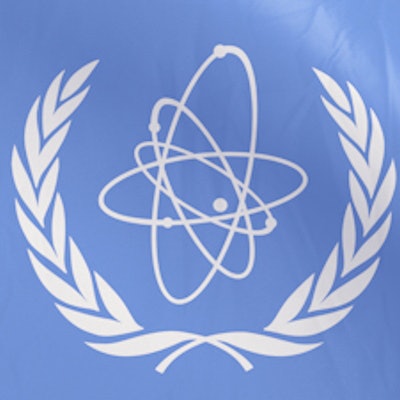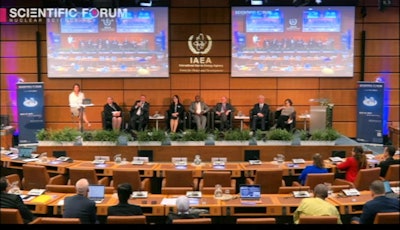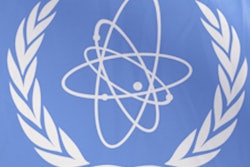
Improving radiation medicine capabilities in poorer countries is key to bridging the massive global gap in cancer care, according to experts gathered this week during the International Atomic Energy Agency's (IAEA) 2022 Scientific Forum in Vienna.
Speakers stressed urgency, with consensus reached on the first step: Get nuclear medicine and radiation therapy systems in place in countries that don't have them.
"Countries do not need other plans and speeches. What they need is radiotherapy units, trained personnel, concrete solutions," said IAEA Director General Rafael Mariano Grossi, who opened the forum on 27 September.
Cancer deaths worldwide are estimated to increase by 60% percent in the coming two decades to 16 million people every year, with more than 70% of these deaths expected to occur in low- and middle-income countries, according to the IAEA.
Moreover, about half of all cancer patients in the world require radiotherapy as part of their treatment, yet only 10% of patients in low-income countries have access to treatment. Africa is particularly affected by this gap. More than 20 countries in Africa have no radiotherapy at all, the IAEA said.
 Panelists and attendees at the IAEA's Scientific Forum discuss increasing global radiotherapy capabilities on 27 September in Vienna.
Panelists and attendees at the IAEA's Scientific Forum discuss increasing global radiotherapy capabilities on 27 September in Vienna.Attendees in Vienna noted that imaging plays a crucial role, with x-ray, CT, and ultrasound leading the way. Almost 100% of patients who need radiotherapy undergo imaging for treatment planning, they noted.
In February, the IAEA launched an initiative called Rays of Hope to tackle this shortage of cancer care capacity in poorer countries, particularly in Africa. The agency's goal is to help launch concrete projects to expand or establish nuclear medicine infrastructure, procure radiotherapy equipment, or train personnel.
Experts in Vienna involved in the initiative touched on how new technologies such as PET/MRI and artificial intelligence algorithms can also help bridge the global gap in cancer care. But they said it will be years before such advances have an impact in countries without a single radiotherapy machine.
"Availability of infrastructure, including consistent electricity and water supply, logistics, and transport can be a serious barrier in many regions," said Dr. Tatul Saghatelyan, head of radiation oncology at the National Center of Oncology in Yerevan, Armenia.
Saghatelyan added that the operational cost of sustaining radiotherapy can be as unaffordable as the initial capital investments.
Dr. Shekinah Elmore, an assistant professor of radiation oncology at University of North Carolina at Chapel Hill, said in a keynote speech that aside from treatment, millions of people stand to benefit also from the pain relief that radiotherapy can provide. Elmore, a cancer survivor, said she was inspired to enter the field by the care she received as a young patient battling the disease.
"There are millions of people around the world who are just like me. People who could survive their cancers, build their careers and parent their children. People who deserve this access to cancer care, access to radiation medicine," she said.
Grossi noted that to achieve the maximum impact with the Rays of Hope initiative, IAEA is expanding its networks to include a broad range of partners, including its member states, development agencies, professional societies, financial institutions, and the private sector.
Earlier this year, six countries pledged about $9 million (9.2 million euros) to the initiative, including France, Japan, Monaco, the Republic of Korea, Sweden, and the U.S., which brought total contributions to date to approximately $12 million (12.3 million euros), he added.
Benin, Chad, the Democratic Republic of the Congo, Kenya, Malawi, Niger, and Senegal are among the inaugural partner countries working with the IAEA under Rays of Hope.



















